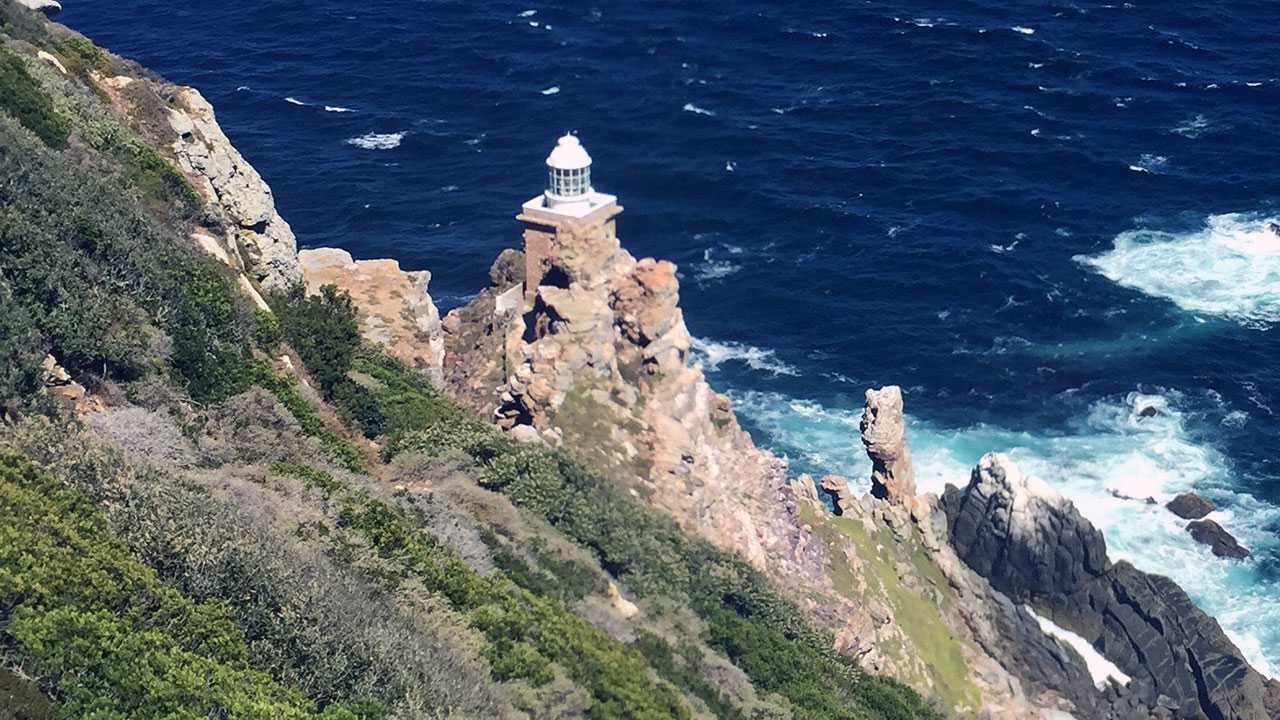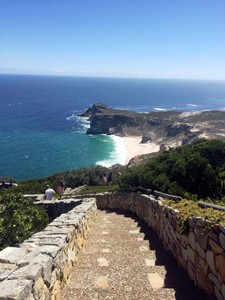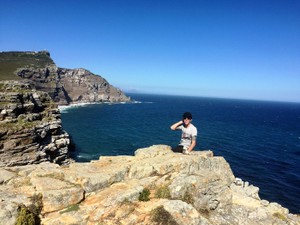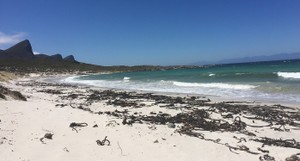Located on the southern tip of the Cape Pensuila is a nature reserve called Cape of Good Hope within Table Mountian National Park. The Cape of Good Hope is home to Cape Point, where the Indian Ocean current and the Atlantic Ocean current meet each other. Cape Point is known for its bizarre weather and nicknamed the Cape of Storms. This is because Cape Point is famous for its weather being seldom agreeable. According to South Africa Weather Service, Cape Point has the most extreme weather conditions with only 2% of all hours in the year with calm conditions. Well worth a day trip if not more to the southern tip of the Cape Pensuila. There is bird watching, animals to see, lighthouses to check out, and beautiful rugged coastline to walk along.
Cape of Good Hope Beaches
Upon arriving at the National park, my friend and I went straight to the beach to see the coastline. Here the water stays very cold as the current is coming from the Antarctic. No matter the time of year, you won’t find many people coming here for the beaches. The wild baboons are pretty infamous for making an appearance and harassing people on the sand also.
Plants and Wildlife
The animals that can be found at Cape Point mongooses, baboons, porcupines, bontebok, zebra, eland, ostrich, leopard tortoises, grysbok, small reptiles, and snakes – boomslangs, puff adders, cape cobras.
Side note about baboons, stay the hell away. The baboons are accustomed to humans and will come right up to you. I personally saw them jumping on people’s vehicles and taking things out of their cars.
The indigenous flora known as fynbos, completely depends on fire for it’s ecosystem. Fynbos thrives from the soil left behind from a fire that recycles nutrients from old growth back into the soil.
Great Whites are infamous for making an appearance on this part of the world. Cape Point has been known where these majestic kings of the sea often breach the water and set a show for anyone lucky enough to catch a glimpse. Along with the great whites, you can find orcas and humpbacks in surrounding bays.
View of Cape Point Lighthouse
At the very end of the point you can find the historic lighthouse. You may either do a 15-minute hike or take the Flying Dutchman Funicular to the lighthouse. Once up top, you have pretty much a 360 view of the beautiful coastline and blue beaches.
We opted to do the walk which is a gorgeous path right along the coastline that goes directly up from stone stairs. Along these stairs are a couple lookout points that offer breathtaking views right over the coastline.
Right around the corner at the actual tip, is a second lighthouse right on the edge of the cliff. This lighthouse was built due to rising mist reasons and is still functional to this date.



